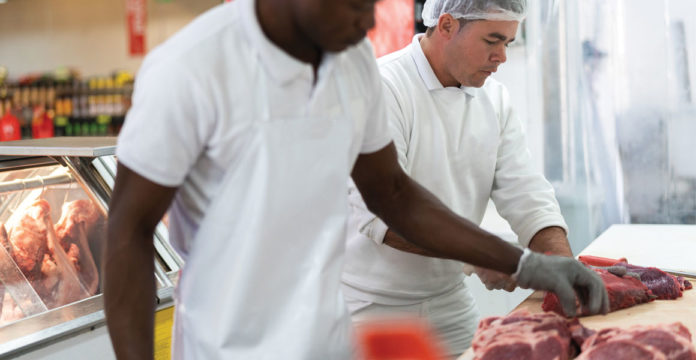David Gilroy, managing director and co-founder of Store Excel, argues that fresh food is still the Achilles’ heel of the wholesale industry
My first job as a young trainee in Sainsbury’s was boning and jointing sides of bacon. Pigs are deceptively big beasts, which made it backbreaking work in an unforgiving environment. However, it allowed me to quickly develop technique, strength and speed, and was part of a training programme that incorporated the full range of trade skills necessary to operate in retail.
Fresh food was the central retail component and the differentiator for Sainsbury’s at that time, and this training has stayed with me throughout my career. We were taught how to carefully prepare and manage chilled goods from the delivery point through to the sales floor to ensure minimum waste and maximum profit. It was impressed upon us that fresh food needs constant attention to detail at all times, which is something the wholesale industry needs to turn its attention to and invest in.
More opinion: The threat of Amazon on independent wholesalers
In today’s retail world, most of the fresh food arrives into stores prepacked and ready for sale. That said, there are still many service counters and now more trade skills required than years ago, with the likes of patisserie, fresh fish, coffee, food to go and fresh flowers all part of the retail landscape. In fact, a 2019 food-to-go report from MCA/HIM projects that the market is worth £21bn, with convenience stores potentially losing out to specialists.
Furthermore, now the discounters have upped their game on fresh food and are putting some excellent fresh assortments in their stores, low price does not always equate to poor quality. Consumers judge a food store by its fresh offering and the retail environment in which it sits.
Insight business IGD puts the number of convenience stores in the UK at approximately 48,000, which breaks down into three groups: multiple-owned, symbol independents and unaffiliated independents. The multiple-owned stores tend to merchandise the chilled foods, produce and fresh flowers first in flow.
This makes a clear statement about the seriousness of the offer and is designed to drive confidence and transaction values. In doing so, these stores achieve the highest sales per square foot in the sector.
More opinons: How incursion and defection threatens wholesalers
However, the fresh offering in the symbols and unaffiliated stores can be best described as ‘variable’. A number of them certainly have some great displays and are actively driving the new food-to-go agenda. But, sadly, many more have abysmal fresh offerings with no attention to detail. They are not really committed to fresh ranges, viewing them as a waste risk and a necessary evil. At the first sign of trouble, they stop ordering and run the range down – a race to the bottom.
Wholesalers are complicit in this as they are the ones who primarily supply these stores. The channel is yet to properly embrace and master fresh food along with all of the new categories that stem from it. This is putting the industry at risk and could be a fatal weakness, with consumers now expecting to find fresh food in small stores.
Times change, but values remain constant, and wholesalers need to invest more resources in these areas. Trade skills require a commitment to training and standards, and fresh-food expertise is essential.








